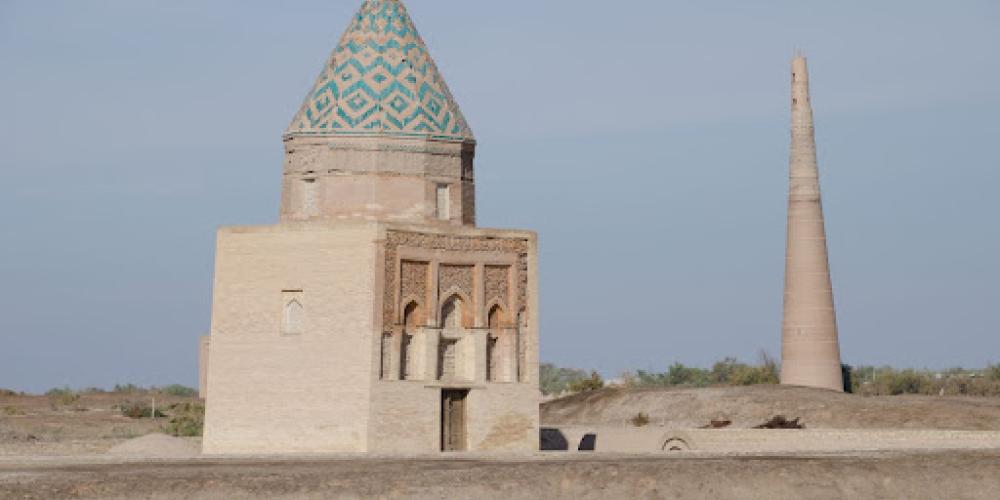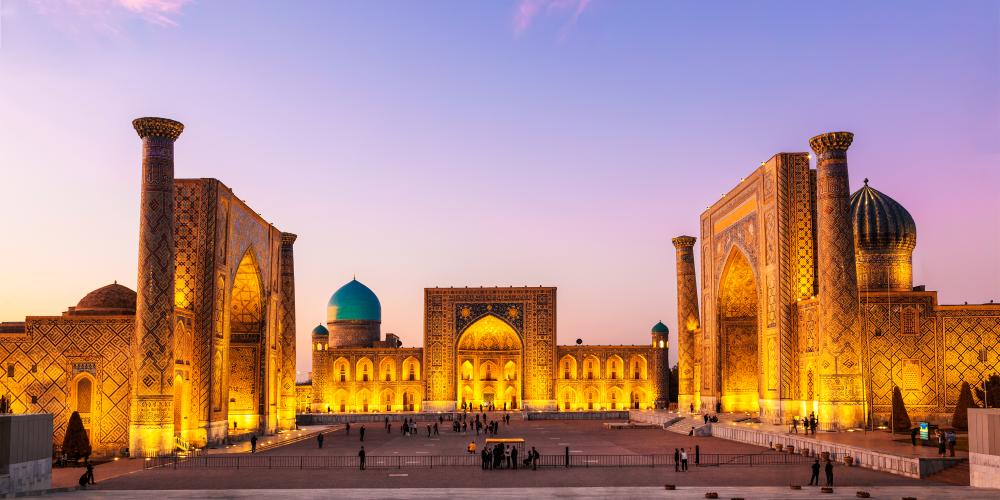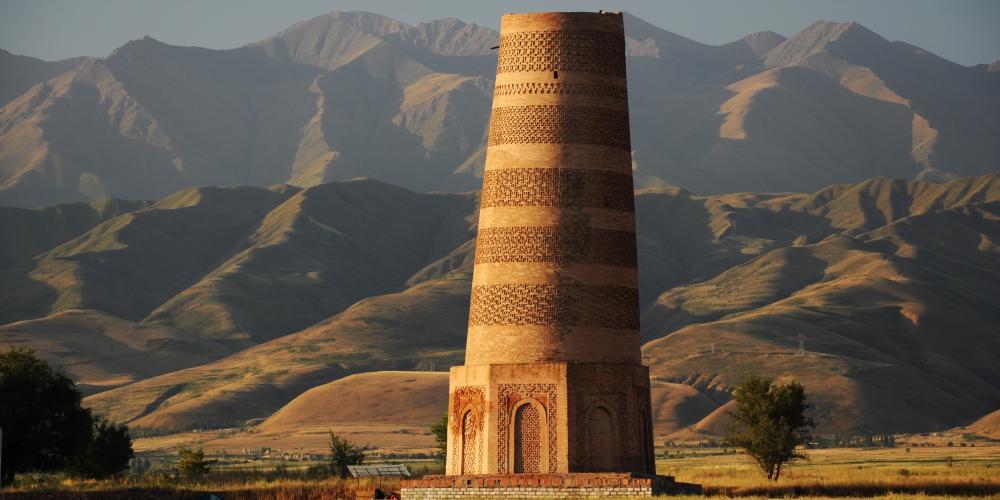Journey Through Central Asia: The Five ’Stans

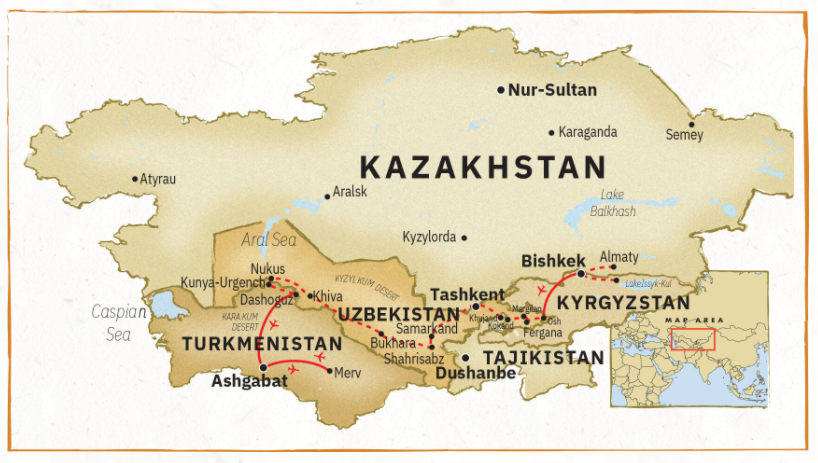
Days 1-5: Almaty (Kazakhstan), Lake Issyk-Kul (Kyrgyzstan), Bishkek
Begin in and around Almaty, the quickly modernizing business capital of Kazakhstan, beautifully situated amid the majestic Tien Shan mountain range. Cross into Kyrgyzstan and spend two nights at beautiful alpine Lake Issyk-Kul before exploring Kyrgyzstan’s capital, Bishkek.
HIGHLIGHTS
- Central Almaty’s Panfilov Park, home to the candy-colored Zenkov Cathedral
- A demonstration of traditional Kazakh falconry in the Tien Shan foothills
- A boat ride on Lake Issyk-Kul
- Iron Age petroglyphs at Cholpan-Ata, near Lake Issyk-Kul
- Burana Tower, one of few remaining Silk Road watchtowers in Kyrgyzstan
- In Bishkek, an evening performance of selections from the Epic of Manas, a traditional Kyrgyz poem
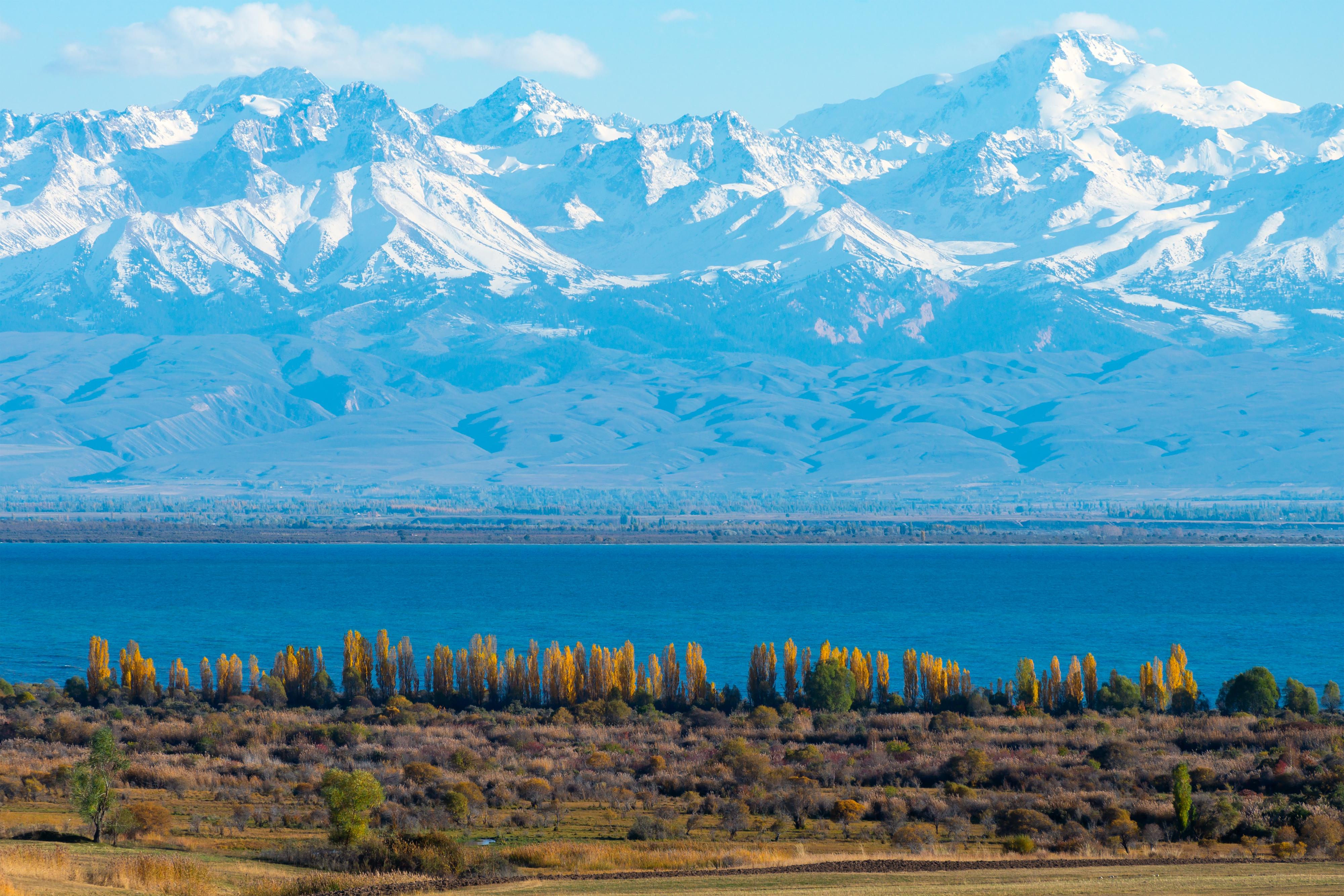
Days 6-8: Osh, Fergana (Uzbekistan), Margilan, Rishtan, Khujand (Tajikistan)
Fly to Kyrgystan’s second-largest city, Osh, located in the lush Fergana Valley, which spans three of the five ’Stans. From there ascend UNESCO-listed Sulaiman-Too Sacred Mountain, one of the holiest Islamic sites in Central Asia. In the Uzbek portion of the valley, visit Margilan and Rishtan, villages specializing in silks and ceramics. Cross the border into Tajikistan for an overnight in historic Khujand.
HIGHLIGHTS
- Sulaiman-Too Sacred Mountain, an Islamic holy site known as “Little Mecca”
- Visits to Margilan’s market and the workshop of one of its silk makers
- Lunch and a workshop tour with a ceramics master in Rishtan Village
- Khujand’s huge, pink Panjshanbe covered bazaar
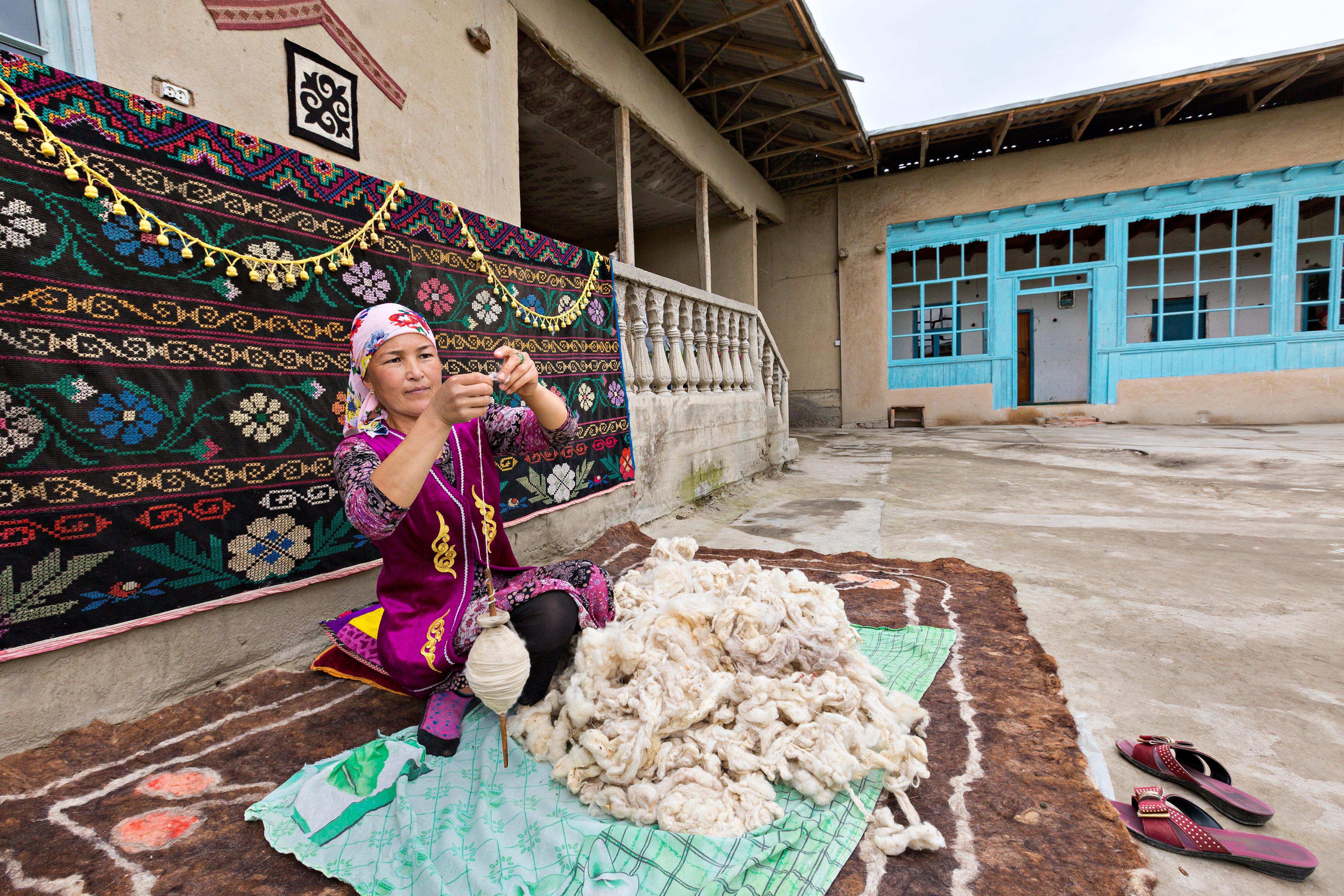
Days 9-17: Tashkent (Uzbekistan), Samarkand, Bukhara, Khiva, Nukus
The Uzbek portion of the trip starts in the capital of Tashkent and then devotes seven nights to three spectacular UNESCO-listed Silk Road oasis cities: blue-tiled Samarkand, once Tamerlane’s seat of power; Bukhara, site of the 2,000-year-old Ark Citadel; and Khiva, with its classic winding alleys and distinctive dun-colored walls. Then travel through the Kyzyl Kum (Red Sands) desert to the remote city of Nukus, the unlikely home of the world-class Savitsky Museum of avant-garde Russian art.
HIGHLIGHTS
- The wide, tree-lined boulevards of modern Tashkent
- Samarkand’s Registan Square, bordered by three beautiful madrassahs
- The 14th century conqueror Tamerlane’s architectural legacy in Samarkand, including Bibi Khanum Mosque, the largest of its day, and Ulug Bek Observatory
- Old Bukhara’s ageless domed bazaars and its central Lyab-i-Hauz Plaza, adorned with a reflecting pool
- Ark Citadel, Bukhara’s huge 2,000-year-old fortress
- Khiva’s Old Town, known as Ichon-Qala, a “living museum” that looks much as it did centuries ago
- Tash-Hauli Palace and Dzhuma Mosque, two of Khiva’s most impressive structures
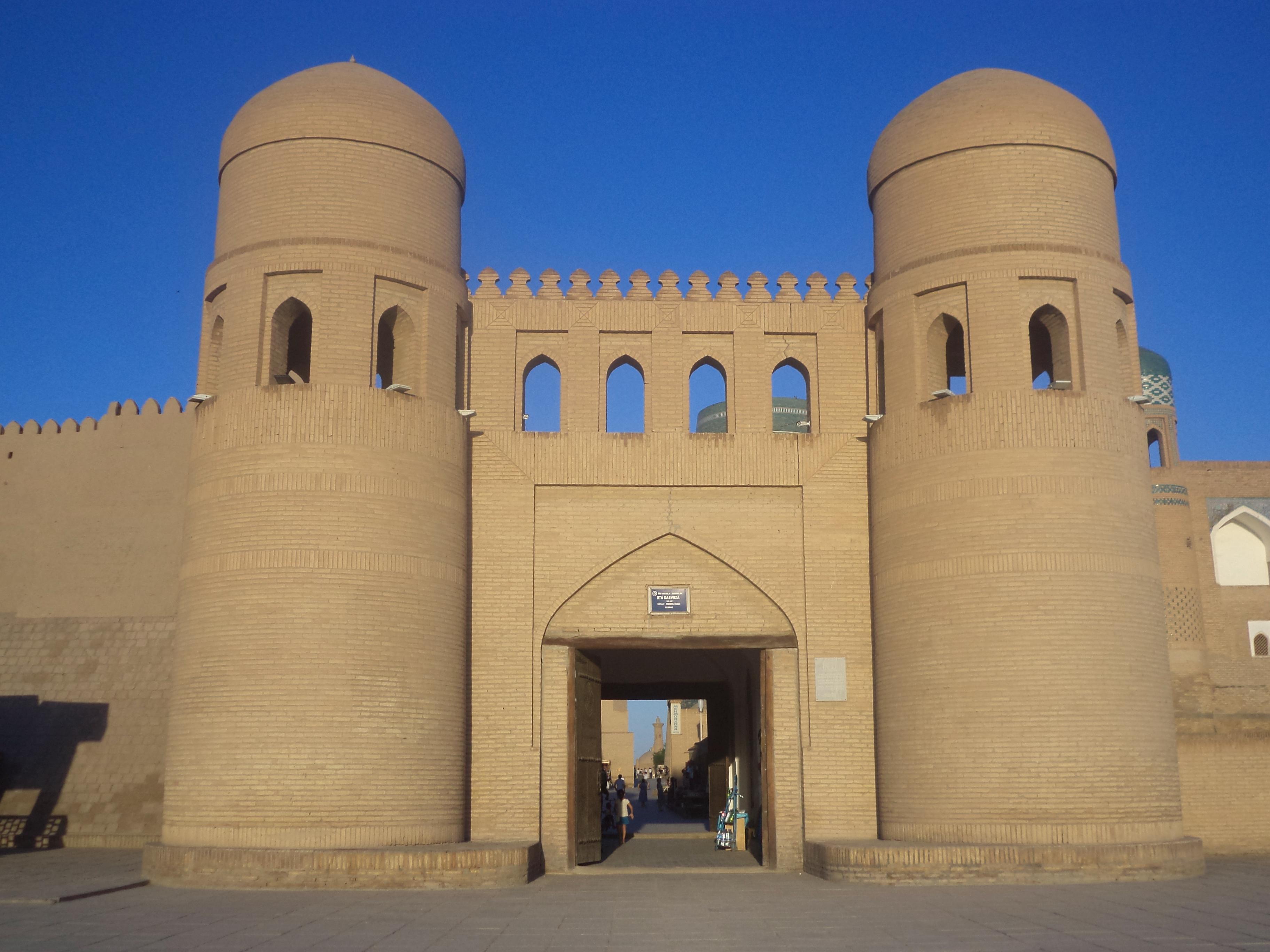
Days 18-22: Kunya Urgench (Turkmenistan), Dashoguz, Ashgabat, Nisa, Merv
Cross into Turkmenistan and visit the UNESCO-listed Old Town of Kunya Urgench, then board a flight to the capital, Ashgabat, a city of flamboyant gilded architecture born from the rubble of a massive 1948 earthquake. A four-night-stay there includes day trips to two UNESCO-listed ancient cities: Nisa, once capital of the Parthian Empire; and Merv, an oasis that supported human life as far back as the Iron Age.
HIGHLIGHTS
- Kunya Urgench’s 11th century Kutlug-Timur Minaret, standing 190 feet tall and decorated with intricate mud brickwork
- The opulent new architecture of Ashgabat, which holds a Guinness record for highest density of white marble buildings in the world
- The $100-million Kipchak Mosque, with its 164-foot golden dome and room for 10,000 worshippers, located just outside Ashgabat
- The ruins of Nisa’s two fortresses, which show influences of ancient Greek and Roman culture
- A trip outside Ashgabat to a farm that breeds renowned Akhal-Tekke horses
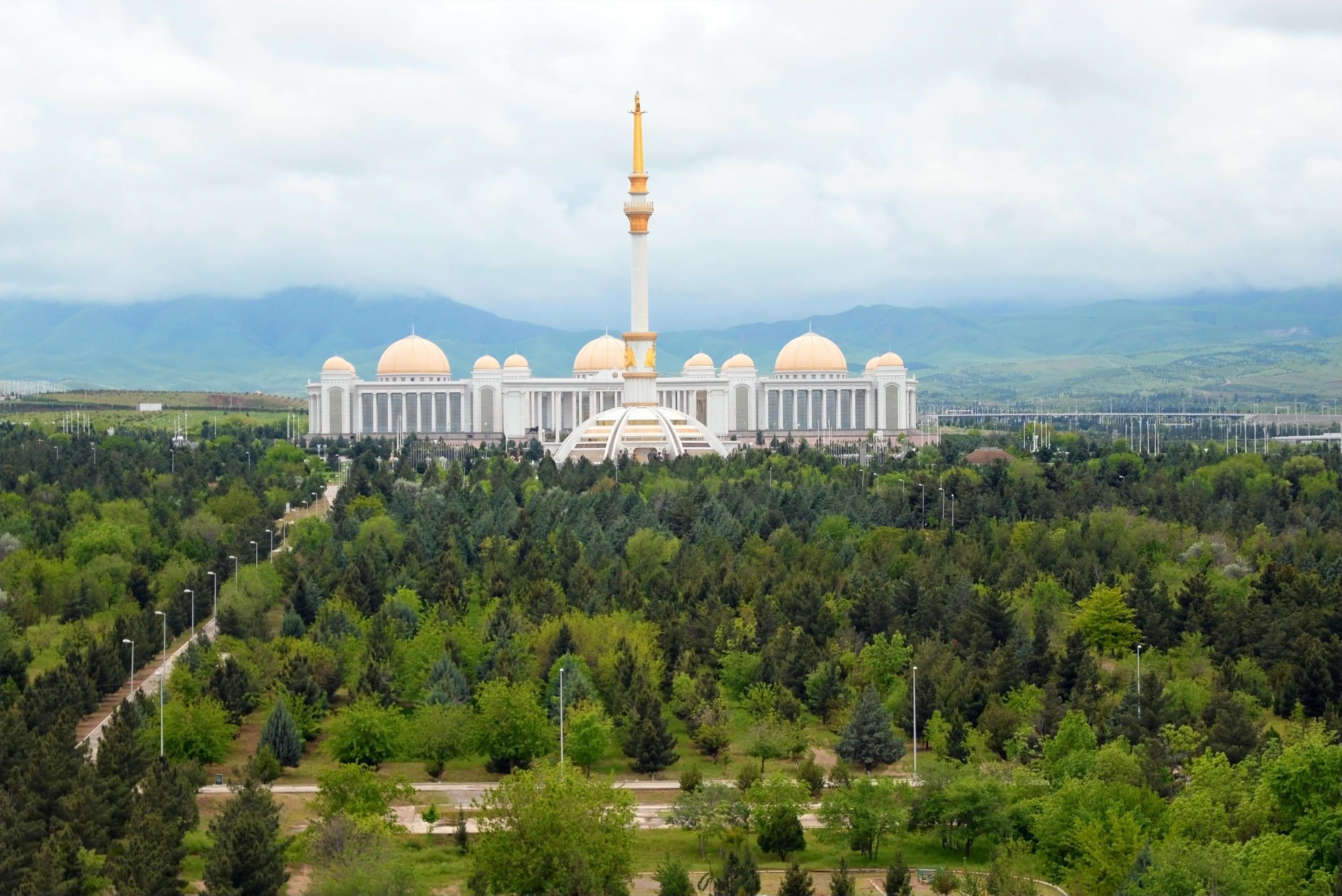
This itinerary was developed with MIR Corporation Tour Operator as part of a capacity building initiative for the Silk Road World Heritage Journeys project.
